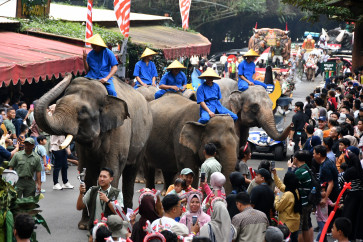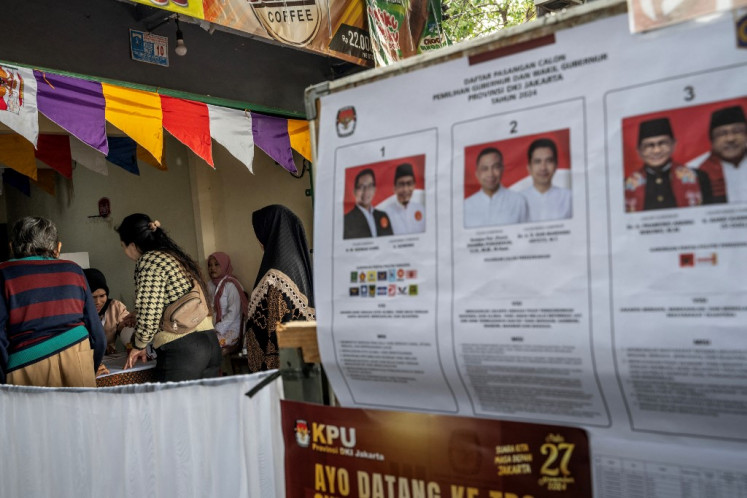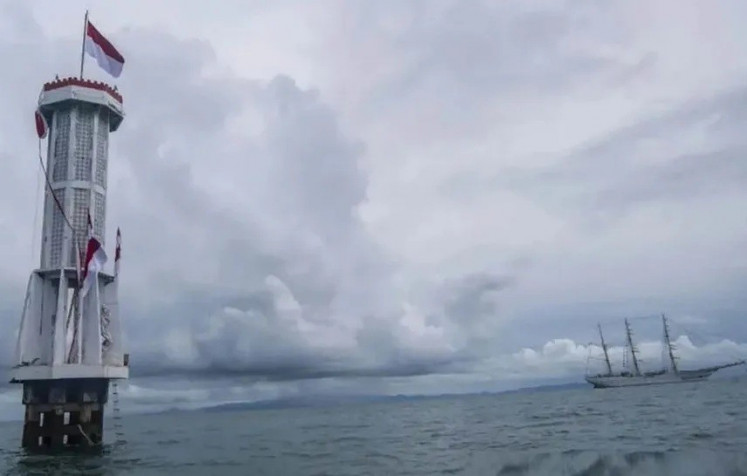Popular Reads
Top Results
Can't find what you're looking for?
View all search resultsPopular Reads
Top Results
Can't find what you're looking for?
View all search resultsGanes TH Seeing Kalijodo Through Comic Sketches
Classic: The late comic artist Ganes TH, renowned for his action comic series Si Buta dari Gua Hantu (The Blind Man from the Ghost Cave), also penned the romance comic titled Kali Djodo
Change text size
Gift Premium Articles
to Anyone
Classic: The late comic artist Ganes TH, renowned for his action comic series Si Buta dari Gua Hantu (The Blind Man from the Ghost Cave), also penned the romance comic titled Kali Djodo.
The notorious nightlife in Kalijodo, one of Jakarta's oldest and biggest red-light district, has come to an end as excavators demolished its brothels, gambling dens and homes in January.
History remembers Kalijodo, the capital's oldest and biggest red-light district, as a place where Chinese merchants would look for courtesans during the Dutch colonial era, a romantic spot for youngsters in the 1950s before turning into a center of prostitution and gambling.
But Kalijodo is being seen in a new light ' through the imagination of the late celebrated comic artist, Ganes TH.
Ganes drew wide acclaim for his action comic series, Si Buta dari Gua Hantu (The Blind Man from the Ghost Cave), a comic series centering on a blind fighter. In his twilight years, he wrote the scripts for the Si Buta dari Gua Hantu TV series.
But few know that in the early years of his career, Ganes, who passed away in 1995 at the age of 60, sketched a romance comic titled Kali Djodo.

There are no prostitutes or gamblers in this comic book, published in 1966. But the comic encompasses issues many associate with the recent Kalijodo: the oppression of women, poverty and thugs.
Under the watchful eyes of comic collectors, a chance to turn the brown, fragile pages of Kali Djodo occurred during GILA Cergam's Indonesian comic event in Jakarta recently.
The book is so rare that some comic collectors whispered that they were hunting for another copy of Kali Djodo.
Ganes began the comic with a sketch of the serene and clean river in Kalijodo and a paragraph: 'If you are traveling from Jakarta to Tangerang, you will see a river that is crowded on certain days; a favorite spot for the youth'.
'The name is Kali Djodo. What a romantic name, right?' he wrote, alluding to the origin of the river name: Kali (river) and Jodoh (mate).
But despite its charm, as Ganes wrote, the river hides a sad story.
It becomes the prelude to a love story set in the Dutch colonial era. A young man, Hardi, falls in love with Marniah upon seeing the girl, clad in batik wrap, washing clothes on the riverbank.
A piece of clothing washed away by the river's current offers Hardi the chance to get acquainted with Marniah. The man is handsome and the woman is beautiful. They will make a perfect couple. But fate decides differently.
Marniah's dad is a poor fisherman who is not able to pay his piling debts to a loan shark, Tuan Djambar. Desiring to wed Marniah, Tuan Djambar sends his henchmen to threaten Marniah's father.
Under great stress, Marniah's dad commits suicide by poisoning himself. Following the tragedy, Tuan Djambar forcibly marries Marniah as his second wife.
Ganes gave a happy ending to the story. Through a string of fight sequences, Hardi rescues and reunites with Marniah.
Kali Djodo reflects Ganes' attention toward social problems around him, comic collector Syamsuddin Andy Wijaya said.
'It is a social drama. When he wrote the comic, prostitution was not yet the major problem in Kalijodo,' said Andy, who is writing Ganes' biography.
Born on May 5, 1935 to a family of Chinese descent, Ganes lived in the Jembatan Lima area in Tangerang, not far from Kalijodo.
Before publishing Kali Djodo, Ganes had been trained to make sociopolitical commentary through his sketches.
During his stint at communist paper Warta Bhakti, Ganes drew caricatures criticizing Nekolim ' an abbreviation for Neo-Colonialism, Colonialism and Imperialism ' a group of countries that then president Sukarno saw as Indonesia's enemies.
'The paper supported Sukarno. Therefore, Ganes sketched caricatures that criticized the West,' Andy explained.
Difference of opinion: Kalijodo, one of Jakarta's oldest red-light districts, was seen in different light by the late comic artist Ganes TH.
The caricatures backfired at him when Soeharto came to power. The authorities put Ganes on the blacklist for producing comics that threatened the state's ideology. But that did not stop him for making social commentary through his works.
Aside from Kali Djodo, Ganes also created the Tuan Tanah Kedaung (Kedaung Landlord) comic book, which captures the power struggle within the family of a wealthy landlord in Tangerang.
'Actually it was based on a real person. When the comic was adapted into film, the family of the Kedaung landlord sued Ganes,' Andy said.
Ganes, as Andy recounted, managed to avoid the charge by arguing that there were a lot of landlords in the area.
'Photos by JP/Yuliasri Perdani











